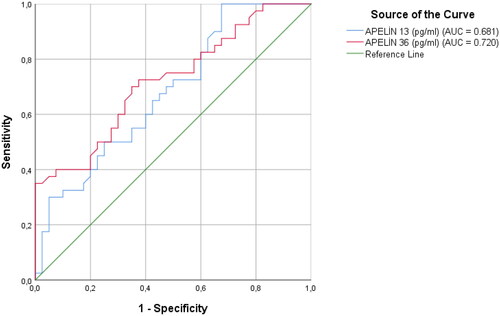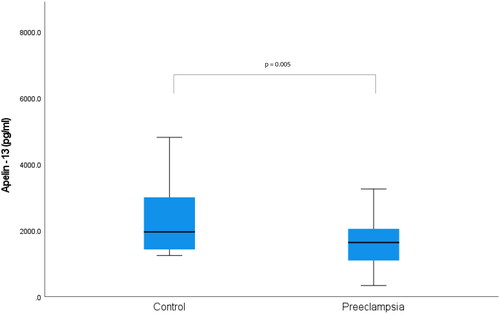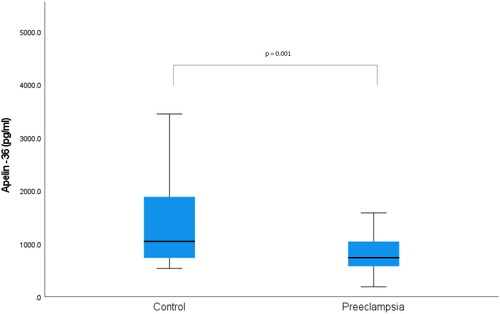Figures & data
Table 1. Demographic characteristics of control and preeclampsia groups.
Table 2. Comparison of control and preeclampsia groups in terms of laboratory and ultrasound findings.
Table 3. Comparison of control and preeclampsia groups in terms of perinatal outcomes.
Table 4. Comparison of control and preeclampsia groups in terms of maternal serum apelin-13 and apelin-36 concentrations.
Figure 3. ROC analysis for the sensitivity, specificity, and positive and negative predictive value of apelin-13 and apelin-36 in preeclampsia.

Table 5. Comparison of control, mild preeclampsia, and severe preeclampsia groups in terms of maternal serum apelin-13 and apelin-36 concentrations.
Table 6. Comparison of control, early-onset preeclampsia, and late-onset preeclampsia groups in terms of maternal serum apelin-13 and apelin-36 concentrations.
Table 7. Correlation between maternal serum apelin-13 and apelin-36 concentrations and preeclampsia related parameters.
Data availability statement
Data supporting the findings of this study is available via the OSFHOME data repository with the 10.17605/OSF.IO/4CG8R DOI identifier.


